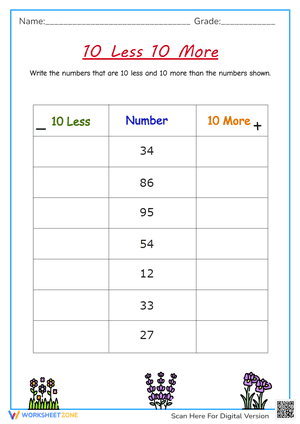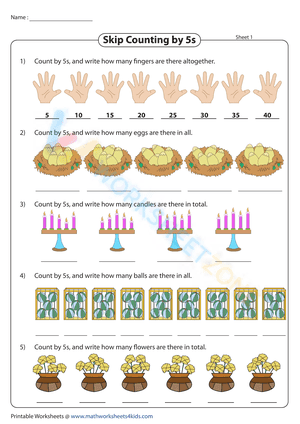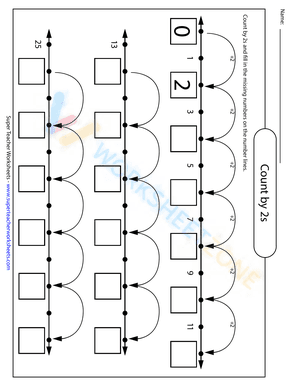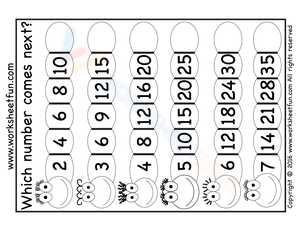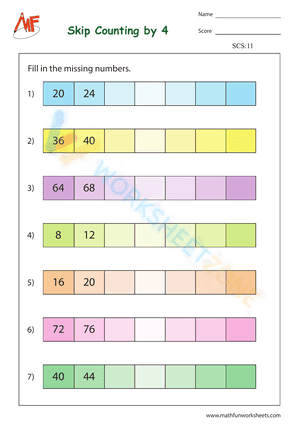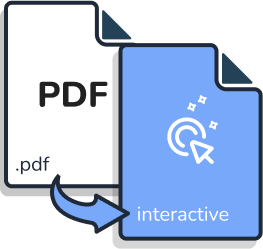Use these fantastic games, activities, and worksheets to teach Grade 1 Mathematics students how to skip count. They've all been created by experienced teachers, ensuring that you're providing a high-quality, dependable resource to your class or child.
Benefits of Skip Counting Worksheets
Skip counting worksheets are useful for students because they aid in the development of number sense patterns. These worksheets contain a variety of questions, and students can easily navigate through them.
These worksheets for skip counting can help students improve their problem-solving abilities. These math worksheets also address the logical and reasoning aspects of mathematics, assisting students in real-life situations.
Students can improve their knowledge of skip counting worksheets and keep the learning process engaging and fun by using visuals. The step-by-step approach of these skip counting worksheets assists students in better understanding concepts and solidifying their understanding of the topic.
What exactly is Skip Counting?
Skip counting is a method of counting forward by numbers other than one in mathematics. To skip count, we keep adding the same number to the previous number each time.
On a number line, we skip counting by two. So, starting with 0, the next number will be 0 + 2 = 2, then 2 + 2 = 4, then 4 + 2 = 6, then 6 + 2 = 8, and so on.
Importance of Skip Counting Worksheets
Counting is the foundation of basic math. Skip counting is introduced to children after they have learned to count by one. This means counting by a number greater than one. It can be by 2s, 3s, 4s, 5s, 10s, or even by 20s or 100s.
There are numerous advantages to learning it in elementary school. For the task, kids can use simple skip counting worksheets. When children can count by twos, threes, or higher numbers, they can learn many other math skills.
Kids who want to improve their math skills must practice mental math. Students who are proficient in this skill can easily add and subtract numbers. For example, to add 4 to 15, they do not need to go up by 1's but can go up by 4's in one step. This broadens their number sense of imagination power.
Similarly, children who excel at counting backward can quickly learn how to subtract numbers. For example, if a student knows 50, 45, 40, 35, 30, 25, and 20, he or she can easily subtract 5 from 50 or any other number. As a result, learning backward counting is also an important math skill.
After addition and subtraction, the next skill to learn is multiplication. Students who excel at skipped counting begin learning times tables quickly. Actually, skip counting is multiplication. When we count by twos, we get 2 times table. Similarly, children learn the 5 times table and the 10 times table by skipping the numbers by 5s and 10s.
Once children can multiply, they can apply their knowledge to divide numbers. As a result, it indirectly helps children learn division. This skill simplifies all four math operations.
Another very important elementary math topic is money counting. Counting nickels is like skipping numbers by 5's; it can also help kids easily add dimes, quarters, and fifty-cent coins. Teachers and parents frequently use coins to teach children to skip counting. This is a good idea, but counting coins is a skill that should be learned after skip counting.
Finally, skip counting is an extremely important basic math skill. It is worthwhile to devote some time to learning it in lower grades (2nd-grade math is the perfect time to learn it). Parents can print skip counting worksheets from the internet and have their children practice this skill. Math is a subject that children learn by doing; once they have learned a math skill, encourage them to practice it using Math worksheets on that topic.
